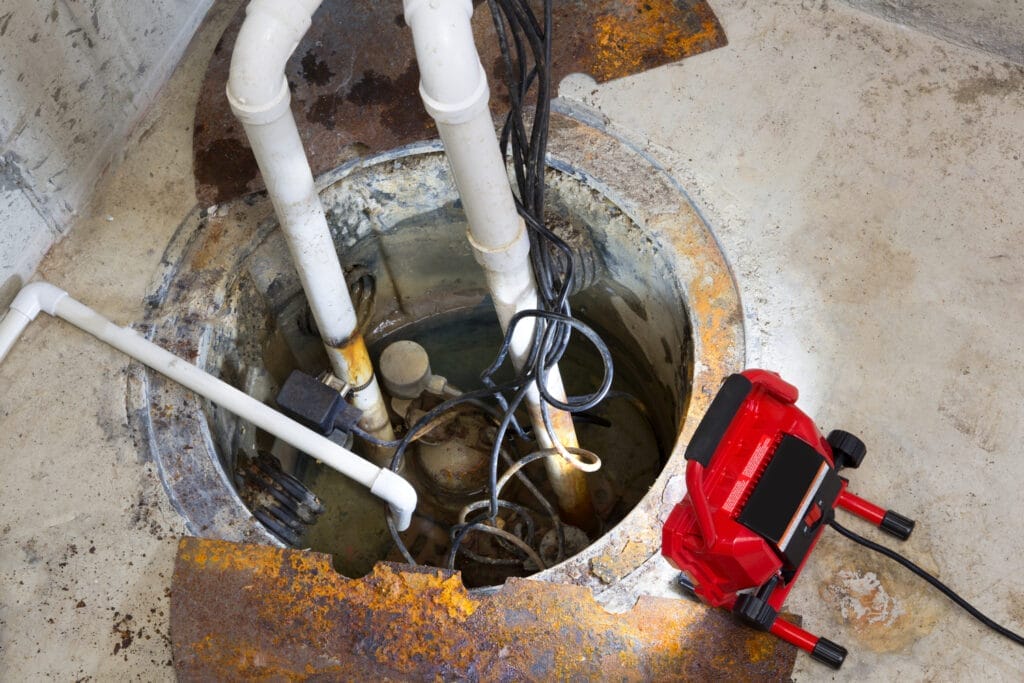Are you tired of dealing with a flooded basement? Installing a sump pump can help protect your home from water damage.
In this step-by-step guide, we’ll walk you through the process of installing a sump pump in your basement. By the end of this post, you’ll have the knowledge and confidence to tackle this project yourself.

How to Install a Sump Pump: A Step-by-Step Guide
Gather necessary tools and materials
To install a sump pump, you will need a sump pump, sump basin, PVC pipe, check valve, drain hose, and tools like a shovel, drill, and saw. Make sure to choose a sump pump that is the right size and power for your needs.
Dig the sump pit
Use a shovel to dig a hole in the lowest part of your basement or crawl space. The hole should be about 2 feet deep and wide enough to fit the sump basin. Make sure the sides of the hole are straight and level.
Install the sump basin
Place the sump basin in the hole. Add a few inches of gravel to the bottom of the basin to help with drainage. Make sure the top of the basin is level with the ground.
Connect the drain pipes
Attach PVC pipes to the sump pump outlet and direct them outside. Use a check valve to prevent water from flowing back into the sump pit. Secure the pipes with PVC cement.
Install the sump pump
Place the sump pump in the bottom of the basin. Make sure it is level and secure. Connect the pump to the drain pipes.
Test the sump pump
Fill the sump basin with water to test the pump. The pump should turn on automatically and remove the water from the basin. Make sure there are no leaks in the pipes.
Cover the sump pit
Use a sump basin cover to keep debris and pests out of the pit. Make sure the cover is secure but easy to remove for maintenance.
Maintain the sump pump
Regularly check the sump pump and basin for any issues. Clean out any debris that may have accumulated. Test the pump periodically to ensure it is working properly. With proper installation and maintenance, a sump pump can help keep your basement or crawl space dry and prevent water damage.
FAQs
Can I install a new sump pump myself?
Installing a new sump pump is possible for DIY enthusiasts. It requires basic plumbing and electrical skills. Proper installation is crucial to ensure the pump functions effectively and prevents basement flooding.
Can you add a sump pump to an existing basement?
Yes, a sump pump can be added to an existing basement. A sump pit must be dug in the basement floor. The pump is then placed inside the pit and connected to a discharge pipe.
How deep should a sump pump hole be?
The depth of a sump pump hole should be between 18 and 24 inches. This depth allows enough room for the pump to operate efficiently and collect water from the surrounding area.
Should you bury a sump pump discharge pipe?
Burying the sump pump discharge pipe is recommended. This prevents water from flowing back into the basement. The pipe should be buried at a depth that is below the frost line to avoid freezing.
Where should I install the sump pump?
Install the sump pump in the lowest part of your basement, typically in a sump pit.
How do I connect the discharge pipe?
Measure and cut PVC pipes to the appropriate length, connect them to the pump’s discharge outlet, and route them outside, away from your foundation.
How often should I maintain my sump pump?
Perform routine maintenance at least once a year, cleaning the pump, checking the float switch, and testing the backup power source.
What if my sump pump doesn’t turn on?
Check the power source, float switch, and discharge pipe for any obstructions or damage. If the issue persists, contact a professional.
What should I do if my sump pump fails during a power outage?
Consider installing a battery backup system or a generator to keep your sump pump running during power outages.
In conclusion
Installing a sump pump is a straightforward process that can protect your home from water damage. By following these steps and prioritizing safety, you can ensure your sump pump functions effectively.
Don’t wait until it’s too late—install your sump pump today and enjoy peace of mind.


